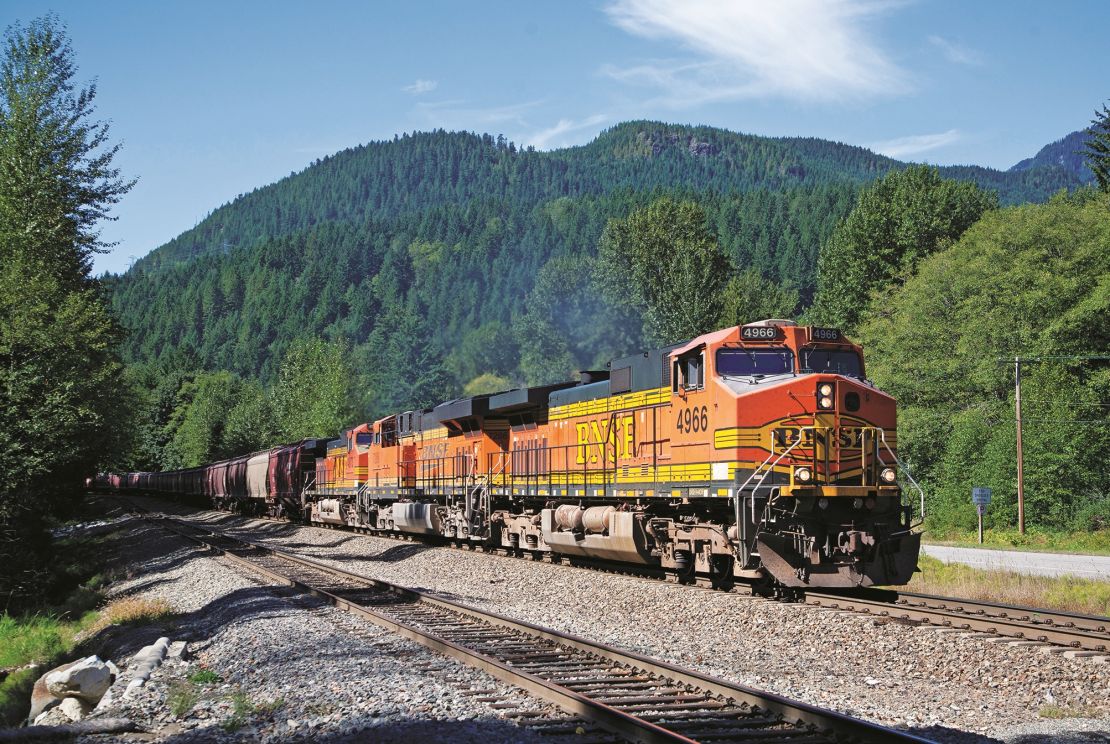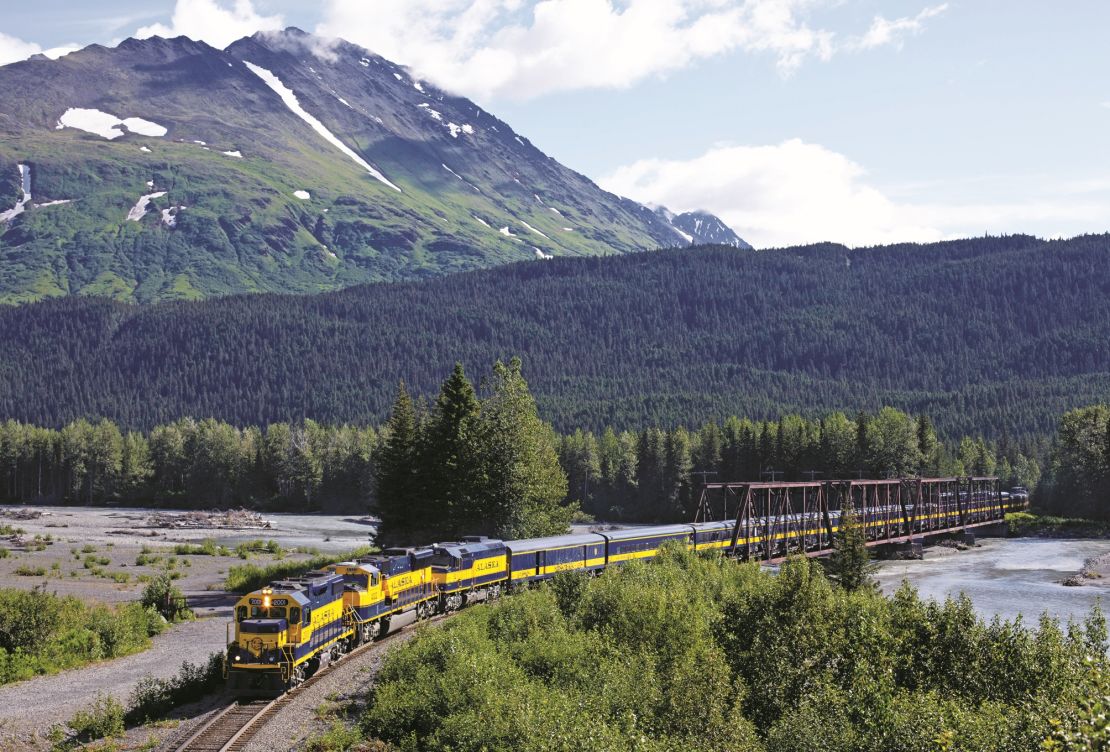Against the backdrop of bright blue sky and the red rocks of the Colorado River canyon, a mustard-yellow train steams through the rugged landscape, the words “Union Pacific” emblazoned on its side.
Little has changed in this striking scene since the late 19th century, when the United States first began building a network of railroads across its vast land mass.
British photographer Jonathan Lewis has journeyed across America’s most beautiful – and most isolated – terrains, photographing timeless trains in spectacular landscapes across the country’s West.
Lewis’ pictures have a vintage postcard look – but the photos in the book were all taken within the past 10 years.
GALLERY: See Lewis’ photos of US trains
“A family holiday to Colorado in 2000 was the first time I visited the USA and saw my first American train in Denver,” Lewis tells CNN Travel.
These eye-catching images are the subject of Lewis’ new book, “Locomotives of the Western United States”, published by Amberley Books.
America’s railroad history

The first US transcontinental railroad was completed in 1869, changing the path of America’s history.
“Once a railway reached an area it was able to develop its industry – as it had an efficient means of moving its goods,” says Lewis, who is fascinated by the link between America’s history and its railway network.
“Many towns were founded by railway companies to serve the railway.”
The US no longer operates many long-distance passenger services, but railroads remain integral for freight trains.

Plus, the path of the railways still plays a part in the way we get across America – even if we don’t go by train.
“Today many long-distance roads and interstates follow the original route of the railway,” explains Lewis. “This was the route which was developed and is often the best route.”
Notably, railways in America are still run by private companies: “They have remained private companies throughout,” says Lewis. “Each with their own unique paint scheme and different operating cultures.”
Great plains, great trains

The railroads are also intertwined with the landscape of these rural American locations: “Railways had to be built through deserts and over mountain passes, which were thought to be impossible at the time,” explains Lewis.
It is the combination of classic trains – some locomotives date from the 1960s and ’70s – combined with stunning landscapes, that make Lewis’ images so striking.

Lewis extensively researches the types of train and the surrounding scenery before he takes the photos.
“Doing research beforehand is important to understand what the railway operations are like,” he says. “And at what time of day a train might show up on less busy railway lines.”
“It is also important to study the route of the railway line on a map – to know what the most scenic sections of line are, and what locations are going to have the sun in the perfect position to photograph the train.”

The sweeping shots encompass sky, trees, canyons and wildlife.
“It helps to get scenery in above the train, which can often only be done from an elevated viewpoint, which shows the train snaking through the Western American landscape,” says Lewis.
“I think it is an important aspect of railway photography, where possible, to get the whole train in the photograph.”
Sometimes this involves a trek to capture the perfect shot.
“It is sometimes necessary to walk up to a couple of miles and climb a hill to reach the required location,” says Lewis.
American dreaming

Lewis’ interest in trains is not specific to the US.
“I also do railway photography much closer to home all over the UK, especially in northern England and Scotland, as well as in Canada,” he says.
But it’s photographing America’s railroads that’s become his passion – and has allowed him to see a side to the country he wouldn’t have seen otherwise.
“Traveling around America photographing trains takes you to spectacular places one would have little reason to visit, a long way off the normal tourist trail,” he says.










![<strong>Union Pacific 6690 and AC4460CW 7324, Biggs Junction, Oregon</strong>: Lewis takes his images from an elevated viewpoint: "It helps to get scenery in above the train [...] which shows the train snaking through the Western American landscape," he says.](https://media.cnn.com/api/v1/images/stellar/prod/170927165545-union-pacific-6690-and-ac4460cw-7324-biggs-orgegon-12th-september-2010.jpg?q=w_2008,h_1358,x_0,y_0,c_fill/h_447)





